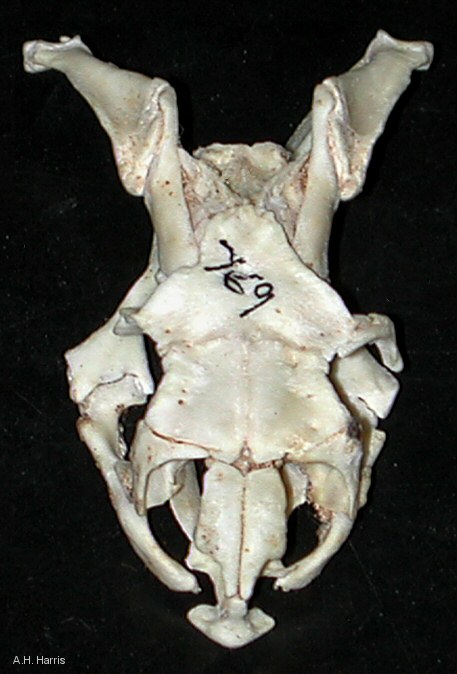
People use strongboxes to protect valuables. Mother Nature sometimes does the same. After all, what could be more valuable than our brains, and when you come to think of it, the solid bony structure of the head makes a pretty good strongbox. With our customary modesty, we tend to assume that the way we are is obviously the best way. Yet many of our desert animals, could they speak, might say "That's foolish! Why you can't even move your skull bones!" And many of these creatures make a very good living by being able to move parts of their skull that are as solid as can be in us.
The snakes are, by far, the experts here. We can move our lower
jaws—and that counts as one kind of bone. Our desert snakes, though have seven
more kinds of bones in the skull that they can move—it's a wonder that their
heads don't simply fall apart! With almost everything held together loosely, they
can swallow prey bigger around than their heads—please, don't try this at
home, folks! 
Contributor: Arthur H. Harris, Laboratory for Environmental Biology, Centennial Museum, University of Texas at El Paso.
Desert Diary is a joint production of the Centennial Museum and KTEP National Public Radio at the University of Texas at El Paso.

A snake skull as seen from the front and above. The looseness of bones making up much of the skull is obvious. The lower jaws are not shown. The snake is the Indigo Snake (Drymarchon corais). Laboratory for Environmental Biology specimen; photograph by A.H. Harris.